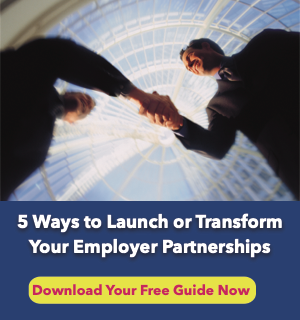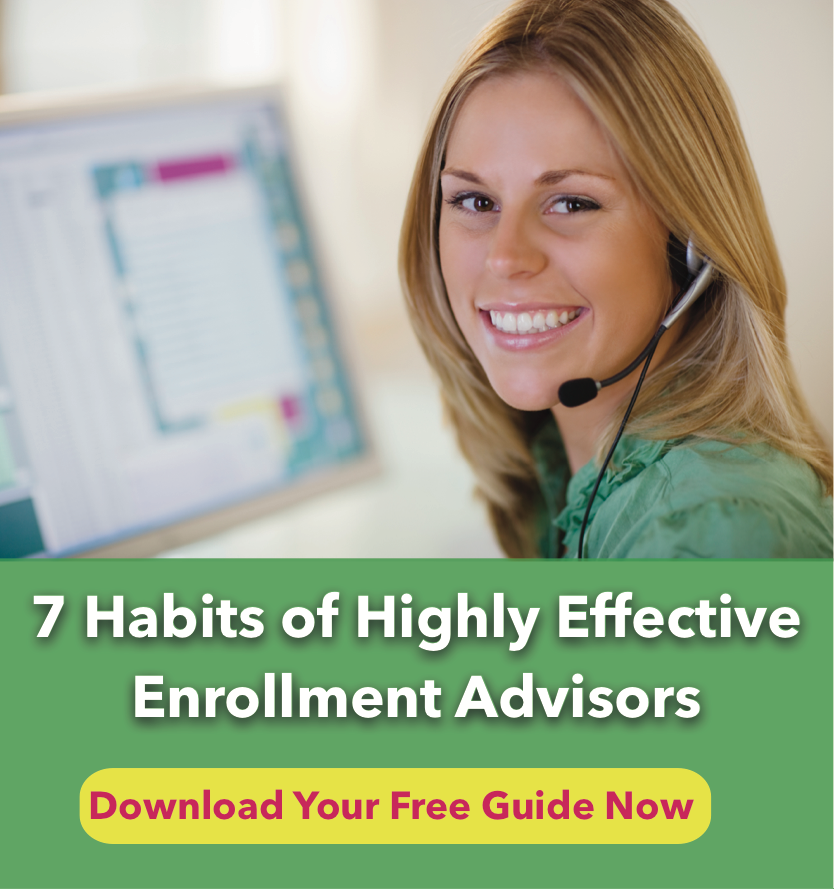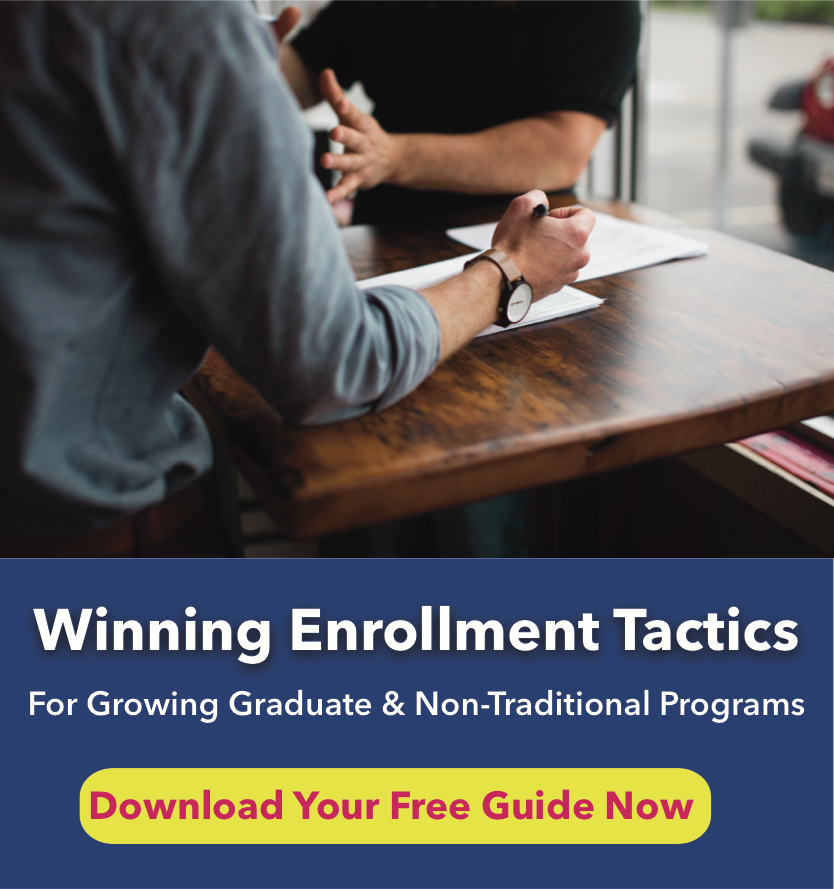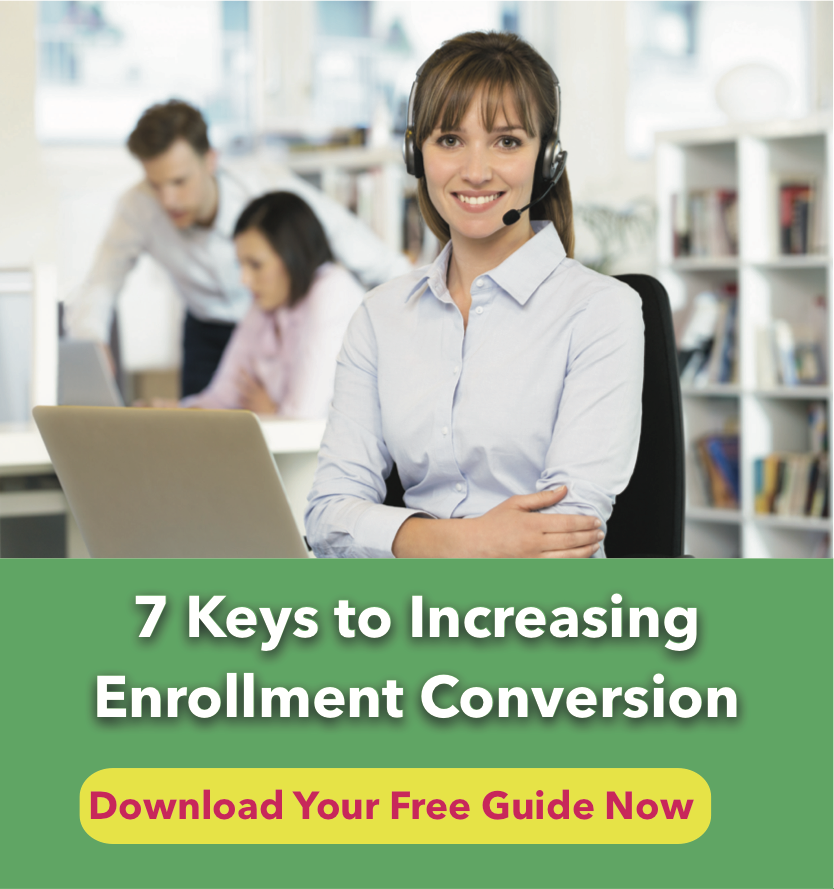Good news! It is possible to grow employer partnerships that produce revenue this academic year. Better yet, it’s easier than you might have thought. As you already know, your working adult students (employees) want professional growth and tuition assistance. And their employers are looking for schools like yours to help take their talent to the next level, along with the right programs to help them recruit, retain, and upskill employees. In short, they want you to be a part of driving value in their company. Of course, colleges will first need to prove their value to students looking for a change in their career or a leg up against their competition.
Here are 5 ways to launch or transform your employer partnerships, providing both value to the employer and the student you ultimately aim to help:
- Make sure your programs meet the needs of working adults.
While you might think this is an obvious suggestion, you’d be surprised at how many schools miss the mark. When working, online, evening, or weekend classes are a must. There are 36,000,000 adults in the workforce who have some college experience but no degree, and millions more who have no higher education. These adults need flexible, relevant learning that allows them to learn while they earn. Your flexibility will always be your advantage, both with employer and student. - Align your programs with local market trends, demands, and workforce needs.
Don’t overlook niche markets. For example, if your school is in areas such as the Midwest or Northeast, where there might be advanced manufacturing opportunities, it makes sense to align your programs with those advanced manufacturing companies in-market. Also, don’t be afraid to flex your liberal arts muscle. Critical thinking and the ability to communicate are much needed and highly valued by managers in today’s economy. While you’re at it, don’t overlook jobs occupied by workers with a high school only degree. If you need outside help, hire us to research your local market to identify employers that align well with your current programs. - Grow with your current offerings and look at opportunities to build or update current programs.
Move ahead with your current offerings, but also look to add skill-up credentials, even in your graduate programs, that are working adult-friendly and align with your mission. Be patient as you gain momentum (the breakthrough may take six to nine months). However, if you measure activities, feedback will be immediate. Learn from startups, or as Voltaire was reported to have said, “Perfect is the enemy of good.” Get in the game before the opportunity has passed. We’ve seen it time and again with schools who come to us for a fix, only to realize that they’re too late to market. Agility and speed are critical. Just ask Amazon. Today is your opportunity to create programs that companies will view as a welcome partnership opportunity. The dividends are enormous. - Resource your employee partnerships appropriately and commit to winning.
Your employer partnership strategy requires dedicated people who have a successful business development background and are not afraid of the phone. Successful employer partnerships marry the old with the new—you need boots on the ground, and you need team members who are going to do face to face in-person cold calls. This is relationship building that goes beyond attending a simple Chamber of Commerce event. New strategies must be infused with targeted digital marketing. At Education Connex, we can help you bridge the old and the new with our outsourced solution that puts our staff in your market and builds relationships for your college that are measurable and produce revenue. - Measure and monetize the effort.
All too frequently, schools view this initiative as a PR initiative. Nothing could be farther from the truth. The objective of this initiative is to build relationships that generate quantifiable revenue—leads, applications, and enrollments. The idea is simple: maximize current relationships and build new ones. There are several opportunities to capture data to determine which employers are sending your school students. And let’s not forget that building referrals from faculty, adjuncts, and students is a significant opportunity that is often overlooked.
Of course, while the suggestions above may be straight forward and easy to implement, not to mention, highly fruitful, the truth is, most universities are not doing the work required. They don’t have the time, infrastructure, or strategies to bring employer partnerships to life systematically. We understand. Resources are limited.
Our suggestion remains firm—find the resources before your competitors do. Employee partnerships are the gift that keeps on giving.
If you need help, we can show you how to get started.







